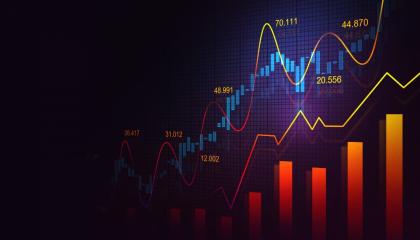QNTS uses FDK demo tokens to simulate real transactions without involving any actual money. This allows safe testing and experimentation before launching a real system.
This is the price performance of QUANT-S (QNTS). It shows the percentage gains and losses for each time period.
This is the price performance of QUANT-S (QNTS). It shows the percentage gains and losses for each time period.
This is the price performance of QUANT-S (QNTS). It shows the percentage gains and losses for each time period.
This is the price performance of QUANT-S (QNTS). It shows the percentage gains and losses for each time period.
This is the price performance of QUANT-S (QNTS). It shows the percentage gains and losses for each time period.
This is the price performance of QUANT-S (QNTS). It shows the percentage gains and losses for each time period.
This is the price performance of QUANT-S (QNTS). It shows the percentage gains and losses for each time period.
This is the price performance of QUANT-S (QNTS). It shows the percentage gains and losses for each time period.
A Smart Demo for Token Management
QNTS is a demonstration platform that showcases how an issuer of a custom cryptocurrency or token can structure their own token-based ecosystem using the New Reality framework. It is not just a visual mockup — it's a live simulation of a tokenized service environment.
Thanks to New Reality’s “Million Opportunities” program (learn more), token creators can showcase working systems before deploying them with real currency.
FDK Token Simulation: All payments, rewards, and transactions are made using demo tokens (FDK), provided through the New Reality Demo Environment.
Create a tradeable digital token that can be used as a currency, a representation of an asset, a virtual share, a proof of
Now that the team is complete, we can finally begin developing the token and preparing the White Paper!
We’ve worked productively all year, and our efforts have paid off – we’ve succeeded in creating an outstanding architecture for our token and its ecosystem!
A test launch and token circulation have been completed. A blockchain explorer has been deployed, and the crypto wallet beta release is underway.
A detailed White Paper has been drafted, legal requirements have been fulfilled, and the token has been registered in the EU in accordance with the MiCA Regulation.
Public Pre-Sale of the Token! Don’t miss your chance to become an owner at a very attractive discount!
Organization of the token’s circulation and exchanges with other crypto-assets. Building a proprietary ecosystem centered on QUANT-S.
The token is at an all-time high and trades strongly on exchanges around the world! Oligarchs are crying because they missed buying it in 2025–2026! Don’t repeat their mistakes—buy QNTS tokens now!
Track current Quant-S Pay prices in real-time with historical TPAY USD charts, liquidity, and volume. Get top exchanges, markets, and more.
Cryptocurrency is a digital or virtual currency that uses cryptography for security. It only exists on the internet and has no physical form (like banknotes or coins).
Key characteristics of cryptocurrency:
Decentralization: Unlike traditional currencies (rubles, dollars, euros), cryptocurrencies are not issued or controlled by a central authority like a bank or government. Their operation is supported by a decentralized computer network.
Cryptography: Every transaction is secured by complex mathematical algorithms. This makes counterfeiting coins or double-spending practically impossible.
Blockchain Technology: All transactions are recorded in a public digital ledger called a blockchain. This ledger is distributed across thousands of computers, which ensures its transparency and immutability—once a transaction is recorded, it cannot be changed or deleted.
Use a reputable wallet that supports your token’s standard (e.g. an ERC-20-compatible wallet).
Hardware wallets (Ledger, Trezor) offer the highest security.
Software wallets (MetaMask, Trust Wallet) are convenient for daily use.
Always back up your seed phrase offline and never share it.
Gas fees are payments to miners/validators for processing your transactions. They vary with network congestion.
Timing: Submit transactions during off-peak hours.
Fee selection: Many wallets let you choose a lower gas price if you can wait a bit longer for confirmation.
Freeze withdrawals: If your token contract supports it, temporarily pause transfers.
Revoke approvals: Use on-chain tools (Revoke.cash) to cancel any unwanted smart-contract allowances.
Notify holders: Publish a clear incident report through your official channels with next steps and timelines.
A coin (like Bitcoin or Ethereum) operates on its own blockchain. A token is built on top of an existing chain (e.g. ERC-20 on Ethereum) and represents assets, rights, or access within a project’s ecosystem. Tokens rely on the underlying blockchain for security and settlement.
Centralized exchanges (CEX): Deposit your tokens to an exchange that lists them, then trade against other coins or stablecoins.
Decentralized exchanges (DEX): Connect your wallet to a DEX (Uniswap, SushiSwap) and perform on-chain swaps without custody.
If your token supports staking or protocol participation, you can lock tokens in a smart contract to:
Secure the network (proof-of-stake chains).
Earn yield in the form of additional tokens or fees.
Always review lock-up periods and minimum staking amounts before committing.
Regulations vary by jurisdiction but generally:
KYC/AML: If you run an exchange or custody service, you must verify user identities.
Tax reporting: Token sales, swaps, and staking rewards are often taxable events. Keep detailed records of dates, amounts, and fair-market values in your local currency. Always consult a qualified tax advisor.
Track current Quant-S Pay prices in real-time with historical TPAY USD charts, liquidity, and volume. Get top exchanges, markets, and more.
Track current Quant-S Pay prices in real-time with historical TPAY USD charts, liquidity, and volume. Get top exchanges, markets, and more.

In 2025, Europe has firmly positioned itself at the forefront of global crypto regulation—...
Read More
The Markets in Crypto-Assets Regulation (MiCA) is not just another policy paper—it’s the c...
Read More
Centralized exchanges (CEXs) like Binance, Coinbase, and Kraken continue to dominate tradi...
Read More